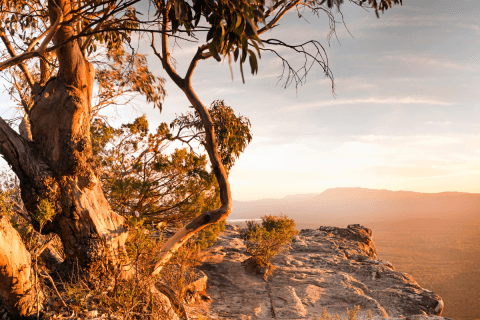
The Voice has been a popular topic in the media as we edge closer to the referendum, expected to take place later this year.
Opinions and feelings are strong and varied, and we’ve heard from a diverse range of voices on both sides of the debate.
But what exactly will a First Nations Voice to Parliament look like if successfully voted into the Australian Constitution?
We unpack some key details of The Voice and important things to consider when determining your vote.
However you intend to vote, the safety, wellbeing, and respect of our First Nations Peoples should be everyone’s priority during what may be an emotional and traumatic time.
We provide some practical ways to be sensitive to First Nations Peoples during The Voice referendum debate in this blog post.
Where did this begin?
While it may have become a popular point of discussion in recent months, The Voice is part of a reconciliation process that’s been unfolding for decades.
First Nations Australians have called for a political voice in one form or another for almost 100 years.
A formal call for a Voice to Parliament protected by the Constitution came about through The Uluru Statement From The Heart in 2017.
This historic statement was formed by over 250 Aboriginal and Torres Strait Islander Delegates from across the nation after days of discussions at the First Nations' National Constitutional Convention in 2017.
The Uluru Statement From The Heart is addressed to the people of Australia with three key objectives:
- Voice to Parliament
- Treaty
- Truth-telling.
We encourage everyone to read The Uluru Statement From The Heart in full to learn more about the context of The Voice.
What is the point of a First Nations Voice?
If successfully voted into the Constitution with a majority of ‘Yes’ votes, The Voice will provide permanent representation and recognition for Aboriginal and Torres Strait Islander Peoples in the Australian Constitution.
It will be a new body that represents First Nations Peoples throughout the country to provide their input into federal government decisions, policies, and laws that impact their lives.
The Voice will act as an advisory body, but it won’t have powers to overrule parliament (known as "veto" powers).
Parliament and government would be obliged to consult The Voice on matters that overwhelmingly relate to First Nations Peoples, such as native title, employment, housing, the community development program, the NDIS, or heritage protection.
The First Nations Referendum Working Group advising the government says the design of The Voice will be guided by the following principles:
- It will provide independent advice to parliament and government
- It will be chosen by First Nations Peoples based on the wishes of local communities
- It will be representative of Aboriginal and Torres Strait Islander communities
- It will be empowering, community-led, inclusive, respectful, culturally informed and gender-balanced, and will also include youth
- It will be accountable and transparent.
You can learn more about the design principles of The Voice here.
The Australian Government has created an information booklet outlining more information on The Voice. You can download it here.
Do all First Nations Peoples support this?
Over 97% of the First Nations delegates at the Uluru National Convention supported a call for a constitutional Voice through The Uluru Statement of The Heart.
Recent polls show 80% of First Nations Australians are in favour of The Voice.
Everyone has their own unique perspective and opinions, including First Nations individuals, and we cannot assume anyone’s stance on The Voice.
It’s important to listen to First Nations voices, respect their stories, and allow them to speak for themselves.
RAQ has listened to our First Nations Workforce who have generously shared their knowledge and wisdom, leading us to an organisational position in favour of a Voice to Parliament.
You can read our First Nations staff-led journey to ‘Yes’ here.
How will voting work?
Voting in the referendum is compulsory for all Australian citizens enrolled to vote.
If you’re already enrolled to vote, you don’t need to enrol again to vote in a referendum.
We’re still waiting for the referendum date to be announced, but it’s expected to take place between October and December 2023.
Voting in the referendum will be similar to voting in a federal election.
It’ll be held on a Saturday, and voters will need to attend polling places, where they will be marked off and then given a ballot form.
Postal votes will be available in similar circumstances as those in an election, and there will be pre-polling booths for those wanting to vote early.
The referendum question contained in the Bill is:
A Proposed Law: to alter the Constitution to recognise the First Peoples of Australia by establishing an Aboriginal and Torres Strait Islander Voice. Do you approve this proposed alteration?
The wording of the referendum question may go through further changes by parliament before the referendum date.
Voters will only need to answer either "Yes" or "No" in response to the proposed question.
The ABC offers a great resource on what to expect when voting in The Voice referendum here.
Support Services
We understand this topic and related conversations may raise difficult emotions for some people. Help is available.
RAQ offers culturally safe counselling and support services for First Nations Peoples. You can call 1300 364 277 to make an appointment or get help finding the right support for you.
For 24/7 crisis support, call 13YARN on 13 92 76 to talk with an Aboriginal or Torres Strait Islander Crisis Supporter.
